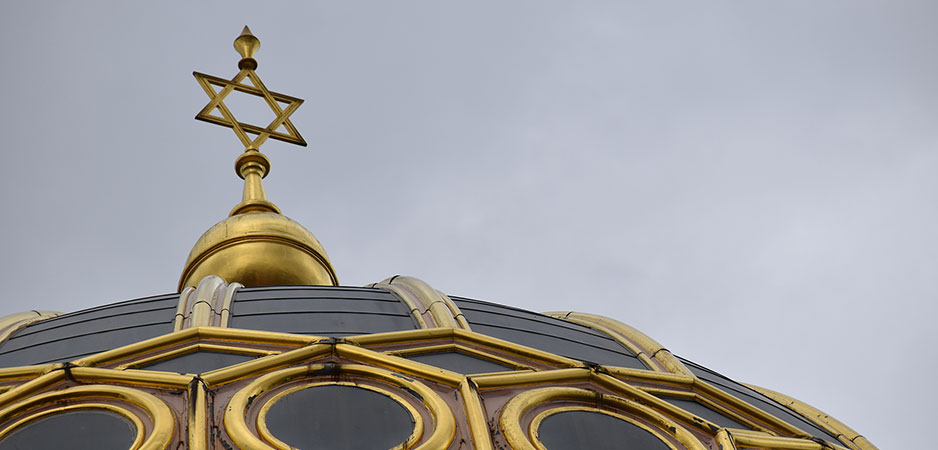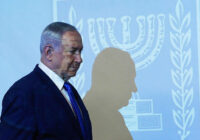The suspect in the terrorist attack on a synagogue in the German city of Halle in October, 27-year-old Stephan B., was driven by anti-Semitism and a radical-right worldview. After the murder of Walter Lübcke in June, this was the second deadly radical-right terrorist attack this year to shake Germany. The Halle attack demonstrated that anti-Semitism is an actual and highly topical threat. A closer look at anti-Semitic incidents by radical-right perpetrators between 1960 and 1990 reveals that anti-Semitism has been a steady ideological feature of radical-right violence and terrorism in Germany.
At the turn of 1959, West Germany was startled by anti-Semitic desecrations of a newly opened synagogue in Cologne. This crime was committed by two members of the radical-right Deutsche Reichspartei and followed by a series of anti-Jewish incidents all over the Federal Republic of Germany.
Other groups did not get beyond anti-Semitic statements and murder fantasies about the Jews. For example, in 1966, a group of three neo-Nazis plotted to murder a Jewish district attorney, Fritz Bauer, who was a leading figure in the Frankfurt Auschwitz trials against Nazi criminals. Members of the radical-right terrorist group Nationalsozialistische Kampfgruppe Großdeutschland in the early 1970s were also militant anti-Semites who planned to throw bombs at Jewish-owned shops. Others turned their plans into action, such as a group around the neo-Nazi Hans Joachim Neumann, which destroyed and desecrated Jewish cemeteries in Lower Saxony in 1974.
Overcoming the Past
From the mid-1970s, radical-right terrorist groups planned and conducted attacks on prominent figures who, in their opinion, were responsible for the prosecution of Nazi crimes. The focus lied mainly on Jewish representatives of the NS-Vergangenheitsbewältigung — a process of coming to terms with the Nazi past — particularly the writer and Holocaust survivor Simon Wiesenthal and the Beate and Serge Klarsfeld.
Wiesenthal was a well known as “Nazi hunter” who played a decisive role in finding and arresting the Nazi war criminal Adolf Eichmann in 1960. The radical-right terrorist scene detested him to the extreme. For example, Neumann’s followers planned to kidnap or kill Wiesenthal in 1974. Such plans did not emerge out of nowhere: The radical-right had been agitating against Wiesenthal for years, which is an indication that those ventures have often been flanked by radical-right political activities.
On June 11, 1982, a bomb hit Wiesenthal’s apartment in Vienna, where he was working as the head of the Jewish Documentation Center. The police arrested nine neo-Nazis, accusing them of a series of anti-Semitic attacks, including the one on Wiesenthal. In 1983, the suspects were brought to trial, with West German radical-right terrorist Ekkehard Weil as the main suspect. The court found the defendants guilty of various attacks, but the one on Wiesenthal’s home could not be definitively tied to the group.
Radical-right terrorists also targeted the Franco-German couple Serge and Beate Klarsfeld, who worked to track down Nazi criminals and bring them to justice. Their contribution to the criminal prosecution of Nazi perpetrators as well as the fact that Serge Klarsfeld was a Jewish Holocaust survivor got them in the sights of radical-right terrorists. For example, some West German groups included the “liquidation” of the couple in their plans. Similar to the Wiesenthal case, the Klarsfelds became victims of a bomb attack when, on July 9, 1979, an explosive device with considerable effect exploded in Serge Klarsfeld’s car in Paris. Only by luck nobody was hurt, but the attack was never fully solved. A French neo-Nazi group, which called itself ODESSA, took responsibility for the bombing and went on to threaten the Klarsfelds’ life in the aftermath. This attack was part of a series of anti-Semitic attacks in France in the late 1970s and early 1980s, partly perpetrated by radical-right terrorist groups and partly by pro-Palestinian groups.
Latest in Line
Many cases remained unresolved over the years, with neither the motive nor the perpetrator identified. One of the most outstanding and shocking was an act of arson against a Jewish retirement home in Munich in February 1970 that killed seven elderly Jewish residents, two of them Holocaust survivors.
On December 19, 1980, Uwe Behrendt, a member of the radical-right Wehrsportgruppe Hoffmann formed around Karl-Heinz Hoffmann, murdered the Jewish publisher Shlomo Lewin and his partner Frida Poeschke in their home in Erlangen. When the police managed to track down Behrendt a couple of months later, the perpetrator had already left the country, having fled to East Germany and afterward to Lebanon with Hoffmann’s help. There, the neo-Nazi presumably committed suicide in September 1981. Lewin had been under constant observation and harassment by neo-Nazis since he openly spoke out against the radical right. This crime was one of the most violent expressions of anti-Semitism before 1990.
Hatred and attacks against Jews had always been a crucial feature of radical-right terrorism in West Germany. While the dichotomy of “friend” and “enemy” constitutes a central feature in radical-right worldview, terrorist groups bring their violent practices in line with this dual principle. The support for the “friends of the cause” is contrasted with the fight against their “enemies.”
Death lists of Jews, political enemies or other opponents were and still are a common practice of radical-right terrorists. Anti-Semitism plays a crucial role in this, as anti-Semitic thought patterns are particularly suitable for constructing a common enemy stereotype. The shooting at Halle targeting worshippers marking Yom Kippur — Judaism’s holiest day — is only the latest in a long line to demonstrate its deadly effects.
*[The Centre for Analysis of the Radical Right is a partner institution of Fair Observer.]
The views expressed in this article are the author’s own and do not necessarily reflect Fair Observer’s editorial policy.
Support Fair Observer
We rely on your support for our independence, diversity and quality.
For more than 10 years, Fair Observer has been free, fair and independent. No billionaire owns us, no advertisers control us. We are a reader-supported nonprofit. Unlike many other publications, we keep our content free for readers regardless of where they live or whether they can afford to pay. We have no paywalls and no ads.
In the post-truth era of fake news, echo chambers and filter bubbles, we publish a plurality of perspectives from around the world. Anyone can publish with us, but everyone goes through a rigorous editorial process. So, you get fact-checked, well-reasoned content instead of noise.
We publish 2,500+ voices from 90+ countries. We also conduct education and training programs
on subjects ranging from digital media and journalism to writing and critical thinking. This
doesn’t come cheap. Servers, editors, trainers and web developers cost
money.
Please consider supporting us on a regular basis as a recurring donor or a
sustaining member.
Will you support FO’s journalism?
We rely on your support for our independence, diversity and quality.






